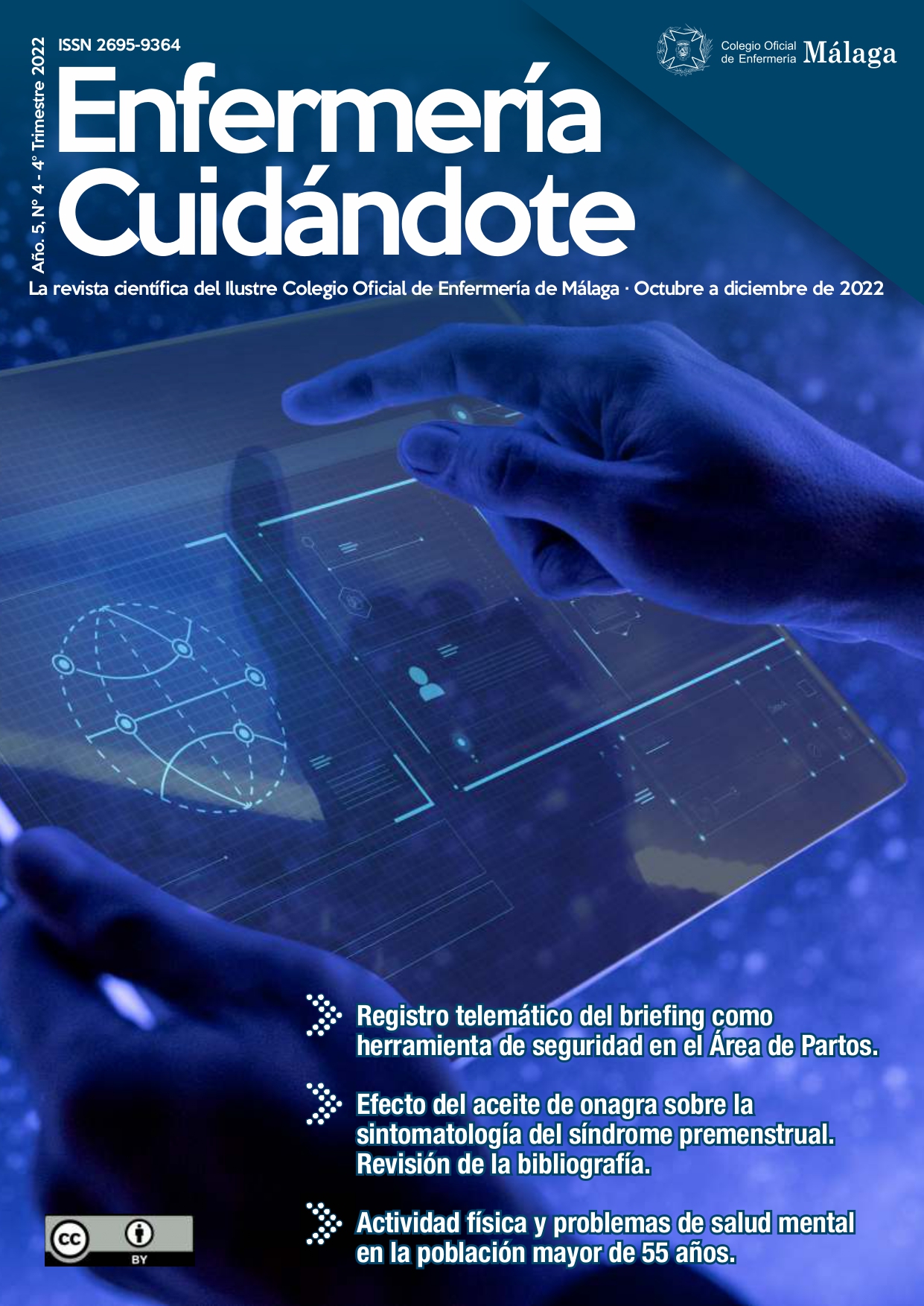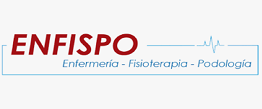Electronic record of the briefing as a safety tool in the Delivery Unit
DOI:
https://doi.org/10.51326/ec.5.4.2543509Keywords:
Briefing, Delivery Rooms, Patient Safety, QR Code, Uses of ICT in HealthAbstract
ABSTRACT
Introduction: In the health field, effective communication helps avoid poor results, especially when all patient care providers form a multidisciplinary team and have to coordinate their actions precisely. In the delivery area, errors are not expected and in most cases they are assumed to be preventable.
Aim: The objective of this work has consisted in the design and implementation of a telematics tool that records the data of each briefing to identify security alerts from the information collected.
Material and Method: Double Design: Descriptive observational study and Bibliographic review of studies published in different electronic databases in English and Spanish focused on the conceptualization of the clinical safety culture and its theoretical foundations.
Results: A high level of agreement was observed on the goals of the day and a high participation among the different professionals. Among the communication problems there was a strong predominance regarding the presence of language barriers with the patients. Staff availability was adequate enough for the workload, much less the available resources.
Conclusions: Briefing sessions recorded by QR code as a systematic strategy to reduce obstetric adverse events can have a significant impact on patient safety.
Downloads
References
Pettker CM, Thung SF, Norwitz ER, Buhimschi es, Raab CA, Copel JA, et al. lmpact of a comprehensive patient safety strategy on obstetric adverse events. Am J Obstet Gynecol. 2009;200(5): 492.e8. https://doi.org/10.1016/j.ajog.2009.01.022
Pettker CM, Grobman WA. Obstetric Safety and Quality. Obstet Gynecol. 2015; 126(1):196-206. https://doi.org/10.1097/aog.0000000000000918
Sabol B, Caughey AB. Quality Improvement and Patient Safety on Labor and Delivery. Obstet Gynecol Clin North Am. 2017;44(4):667-678. https://doi.org/10.1016/j.ogc.2017.08.002
Chang C, Perlman J. Anticipation and preparation for delivery room emergencies. Semin Fetal Neonatal Med. 2019;24(6):101031. https://doi.org/10.1016/j.siny.2019.101031
McComb SA, Lemaster M, Henneman EA, Hinchey KT. An Evaluation of Shared Mental Models and Mutual Trust on General Medical Units: Implications for Collaboration, Teamwork, and Patient Safety. J Patient Saf. 2017;13(4):237-242. https://doi.org/10.1097/pts.0000000000000151
Institute of Medicine (US) Committee on Quality of Health Care in America. To Err is Human: Building a Safer Health System. Kohn LT, Corrigan JM, Donaldson MS, editors. Washington (DC): National Academies Press (US); 2000. https://doi.org/10.17226/9728
Hart WM, Doerr P, Qian Y, McNaull PM. What Constitutes Effective Team Communication After an Error? AMA J Ethics. 2020;22(4): E298-304. https://doi.org/10.1001/amajethics.2020.298
Mehlhaff KM, Pettker CM. Establishing and Maintaining a Quality and Safety Program on Labor and Delivery. Clin Obstet Gynecol. 2019;62(3):572-579. https://doi.org/10.1097/grf.0000000000000468
Pettker CM, Grobman WA. Obstetric Safety and Quality. Obstet Gynecol. 2015;126(1):196-206. https://doi.org/10.1097/aog.0000000000000918
Etherington C, Wu M, Cheng-Boivin O, Larrigan S, Boet S. Interprofessional communication in the operating room: a narrative review to advance research and practice. Can J Anaesth. 2019;66(10):1251-1260. https://doi.org/10.1007/s12630-019-01413-9
The Joint Commission Sentinel Event Alert: Preventing infant death and injury during delivery. Issue 30, July 21, 2004. Disponible en:
https://www.jointcommission.org/resources/patient-safety-topics/sentinel-event/sentinel-event-alert-newsletters/sentinel-event-alert-issue-30-preventing-infant-death-and-injury-during-delivery/ [Consultado 01/06/2022]
McQuaid-Hanson E, Pian-Smith MC. Huddles and Debriefings: Improving Communication on Labor and Delivery. Anesthesiol Clin. 2017;35(1):59-67. https://doi.org/10.1016/j.anclin.2016.09.006
Harris PA, Taylor R, Minor BL, Elliott V, Fernandez M,..., REDCap Consortium. The REDCap consortium: Building an international community of software platform partners. J Biomed Inform. 2019; 95:103208. https://doi.org/10.1016/j.jbi.2019.103208
Rodziewicz TL, Houseman B, Hipskind JE. Medical Error Reduction and Prevention. 2021. In: StatPearls. Treasure Island (FL): StatPearls Publishing; 2021. Disponible en: https://www.ncbi.nlm.nih.gov/books/NBK499956/
Weller J, Boyd M, Cumin D. Teams, tribes and patient safety: overcoming barriers to effective teamwork in healthcare. Postgrad Med J. 2014 Mar;90(1061):149-54. http://dx.doi.org/10.1136/postgradmedj-2012-131168
Rönnerhag M, Severinsson E, Haruna M, Berggren I. A qualitative evaluation of healthcare professionals' perceptions of adverse events focusing on communication and teamwork in maternity care. J Adv Nurs. 2019 Mar;75(3):585-593. https://doi.org/10.1111/jan.13864
Yip L, Farmer B. High Reliability Organizations—Medication Safety. J Med Toxicol. 2015; 11, 257–261. https://doi.org/10.1007/s13181-015-0471-2
Sundar E, Sundar S, Pawlowski J, Blum R, Feinstein D, Pratt S. Crew Resource Management and Team Training. Anaesthesiol Clin. 2007;25(2):283-300. https://doi.org/10.1016/j.anclin.2007.03.011
Salik I, Paige JT. Debriefing the Interprofessional Team in Medical Simulation. 2020 May 5. In: StatPearls. Treasure Island (FL): StatPearls Publishing; 2021. Disponible en: https://www.ncbi.nlm.nih.gov/books/NBK554526/
Reszel J, Weiss D, Sprague AE, Fell DB, Dunn S, Walker MC, Sidney D, Taljaard M, Peterson WE. A mixed-methods evaluation of the MOREOB program in Ontario hospitals: participant knowledge, organizational culture, and experiences. BMC Health Serv Res. 2019 Jul 8;19(1):460. https://doi.org/10.1186/s12913-019-4224-9
Buljac-Samardzic M, Doekhie KD, van Wijngaarden JDH. Interventions to improve team effectiveness within health care: a systematic review of the past decade. Hum Resour Health. 2020;18(1):2. https://doi.org/10.1186/s12960-019-0411-3
Menon S, Singh H, Giardina TD, Rayburn WL, Davis BP, Russo EM, Sittig DF. Safety huddles to proactively identify and address electronic health record safety. J Am Med Inform Assoc. 2017 Mar 1;24(2):261-267. https://doi.org/10.1093/jamia/ocw153
Maestre JM, Rudolph JW. Theories and styles of debriefing: the good judgment method as a tool for formative assessment in healthcare. Rev Esp Cardiol (Engl Ed). 2015 Apr;68(4):282-5. https://doi.org/10.1016/j.rec.2014.05.018
Gonzalez-Argote Javier, Garcia-Rivero Alexis Alejandro. QR codes and their uses in health sciences. Rev. cuba. inf. cienc. salud. 2016 Jun; 27( 2 ): 239-248. Disponible en: https://pesquisa.bvsalud.org/portal/resource/es/lil-781965




















